To the readers of my blog, I apologize for the lengthy hiatus from writing these pieces. I usually take a month off from writing in the summer, as the nice weather and being outdoors tends to distract me from sitting down indoors to write. This summer was no different, but the break was a bit longer due to some unforeseen events.
In a bit of a break from my usual themes of technology and market trends , I’ll tell the tale of how I walked away from a plane crash while coming home from a rafting trip in the Northwest Territories. You read that correctly – I was in a small plane that crashed in August and walked away with relatively minor injuries. The point of this piece isn’t to generate sympathy for me or scare anyone from taking their next holiday, but to reflect on the experience and share it with everyone. I feel like I need to share this story with everyone before getting back to my usual blog topics.
The experience made me really appreciate my life and my work. Some might think that after an experience like this I would want to make some drastic life change like become a monk or quit my job to travel the world. In fact, it was actually the opposite. I am in a very good place in my life and work. I am more motivated than ever to keep going and to get better and better at what I do.
But first I’ll take you back to the beginning of the story and explain how it all happened. If you are pressed for time you can skip the travel portion of the blog and go right to the conclusions as this piece got a bit lengthy, but it was hard to leave anything out.
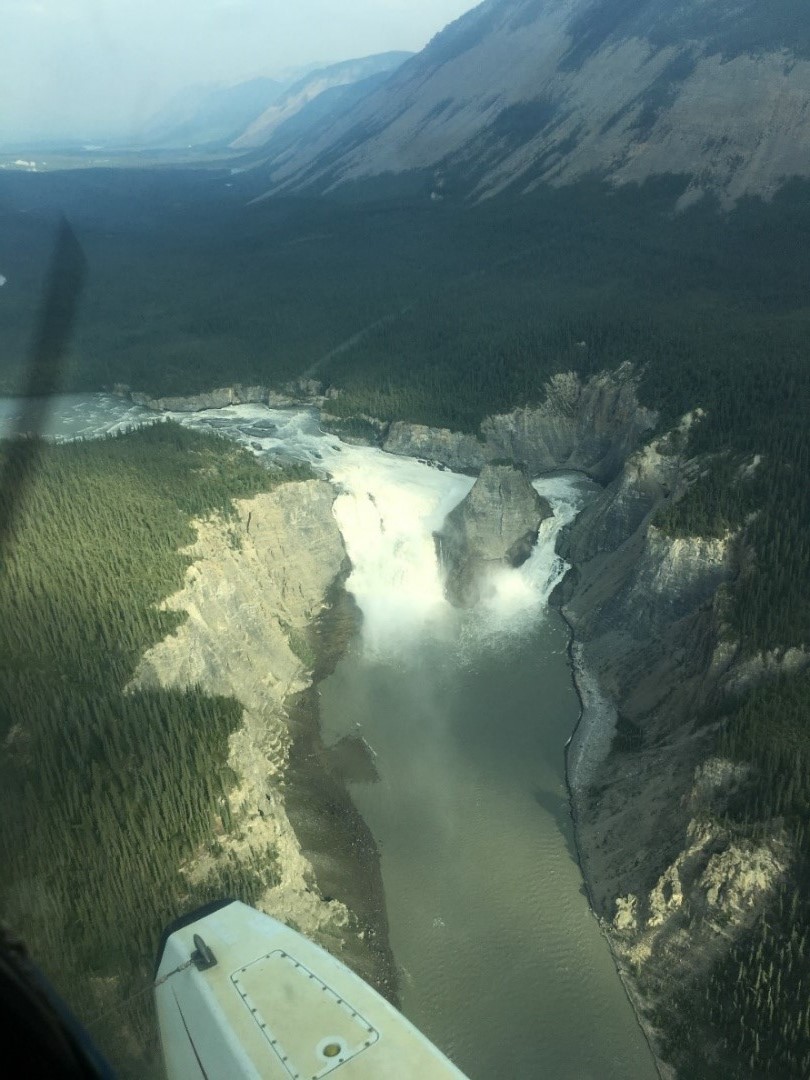
In August I was fortunate enough have had the opportunity to go on a seven-day rafting trip with my parents and three children on the Nahanni River in the Northwest Territories. If you have never been up to northern Canada, it is a beautiful and remote part of the world. Nahanni National Park and the canyons of the Nahanni river are spectacular. Nahanni National Park sees only around 1000 visitors per year with about half of the visitors flying in for the day on a float plane for short hike to the waterfall and a photo-op before heading back out. By comparison, I estimate the main Banff park gates easily admits over 1000 visitors per hour on a busy day in the summer.
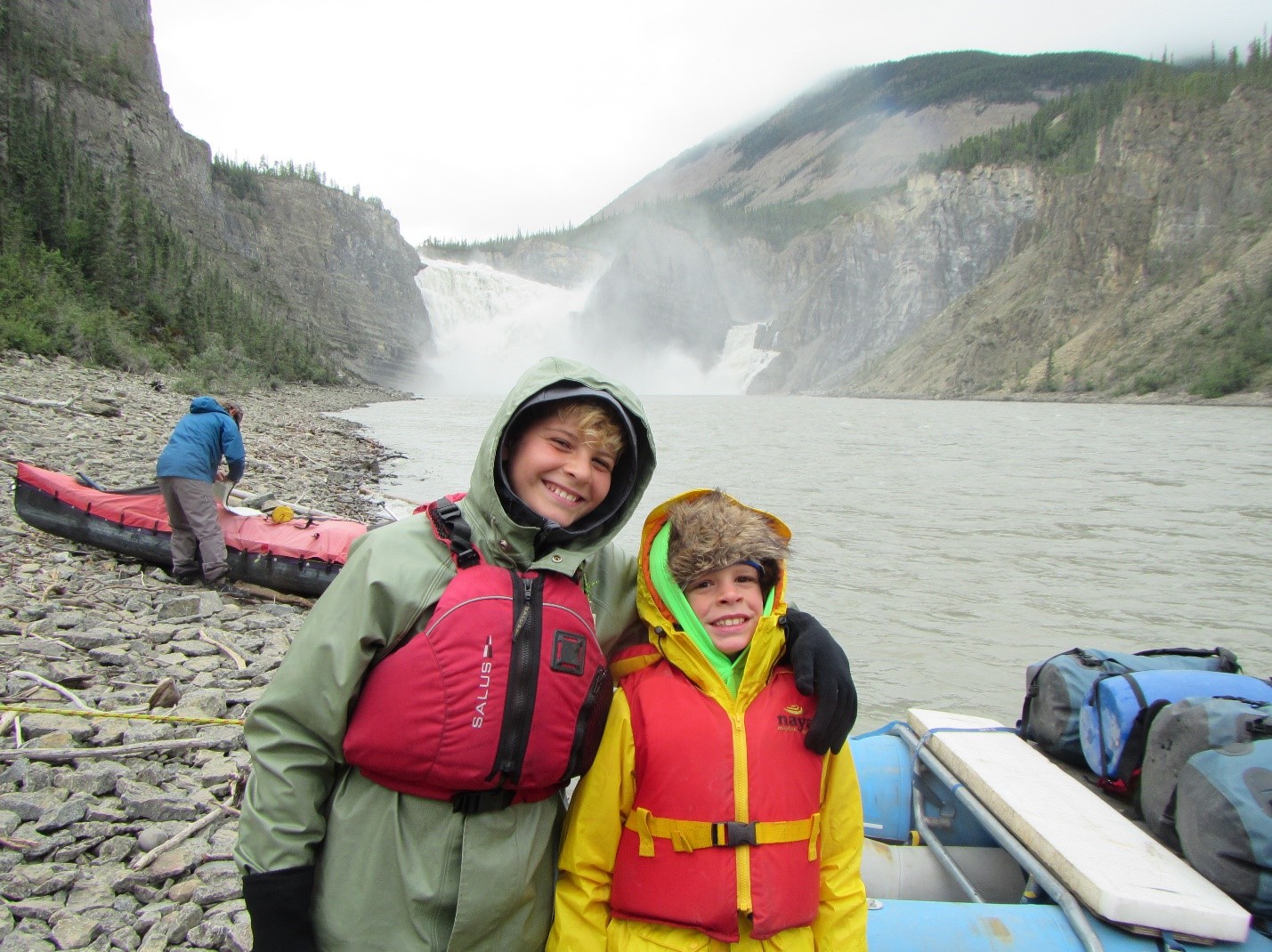
The Nahanni river starts at the headwaters of Moose Ponds, runs for 540 km before meeting up with the Liard River and eventually flowing to the Mackenzie River continuing up to the Arctic Ocean. One of the main attractions, and the starting point for our trip, is Virginia Falls or known by the traditional Dene name Nailicho. This waterfall is over twice as high as Niagara Falls and is an impressive sight. We portaged our gear around the waterfall in several trips on foot, as dropping 120m over the falls in a raft isn’t a realistic option. The geology of the Nahanni river is unique as it was partially carved out by glaciation as opposed to solely by erosion, so the river often passes through canyons of nearly vertical cliff walls on both sides of the river.
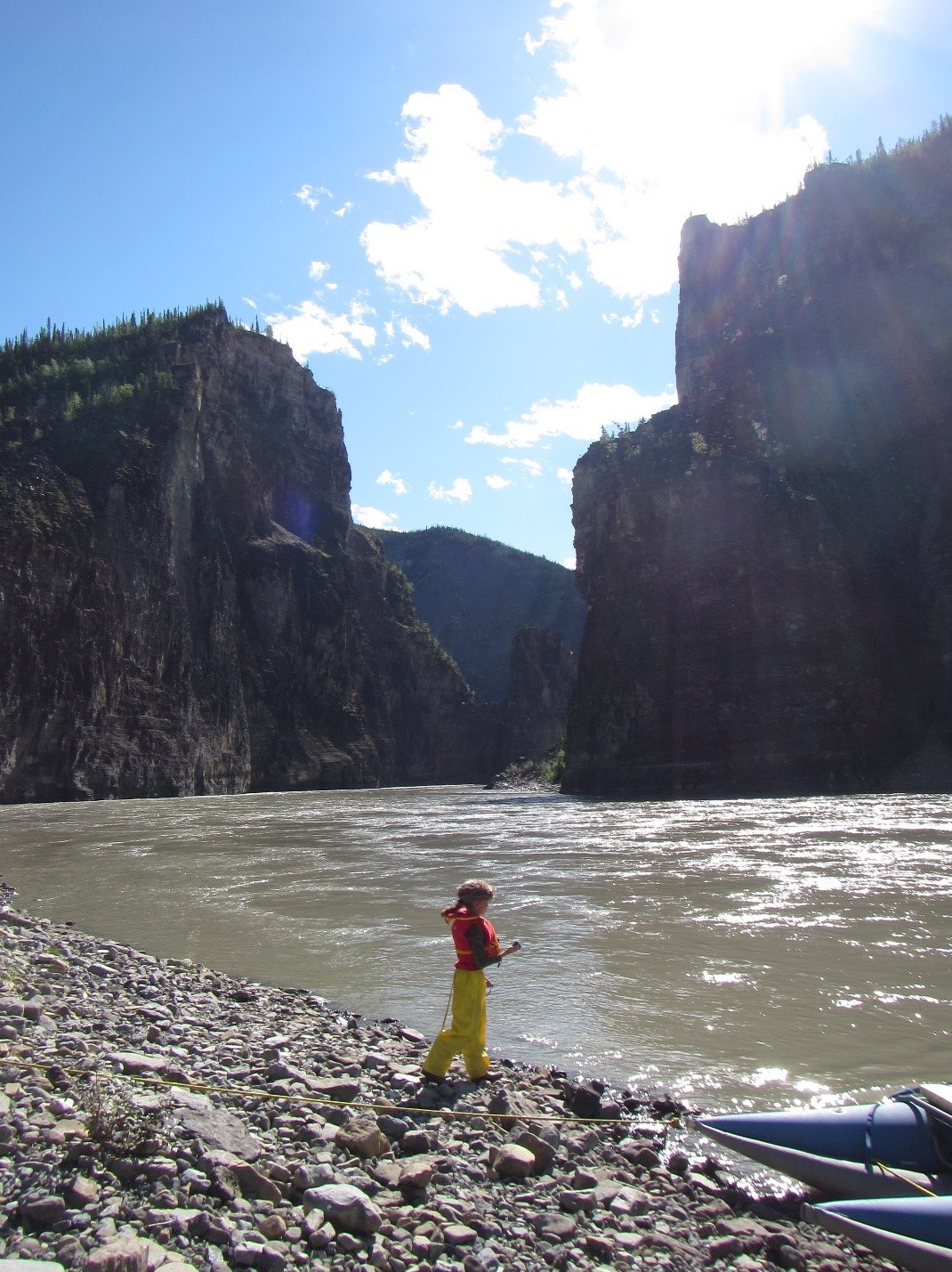
Our rafting trip ran for a week and the time on the river passed quickly. Other than a bit of rain on the first and last days, we had warm sunny weather and were able to swim (briefly) in the river, enjoy hikes up different side canyons, climb up to lookout points and fish in the crystal-clear tributaries. There were hardly any mosquitos until the river flattened out on the last day, which was a nice plus as well. I could probably go on for a few pages on the rafting trip alone, but I’ll sum up the travel writing section of this blog here. It is a unique and rarely visited part of the world. For anyone with an interest in the outdoors, the rafting company made it a very accessible trip for people of all ages. The guides did an excellent job setting up the camps each day and prepared delicious food with the limited camp kitchen.
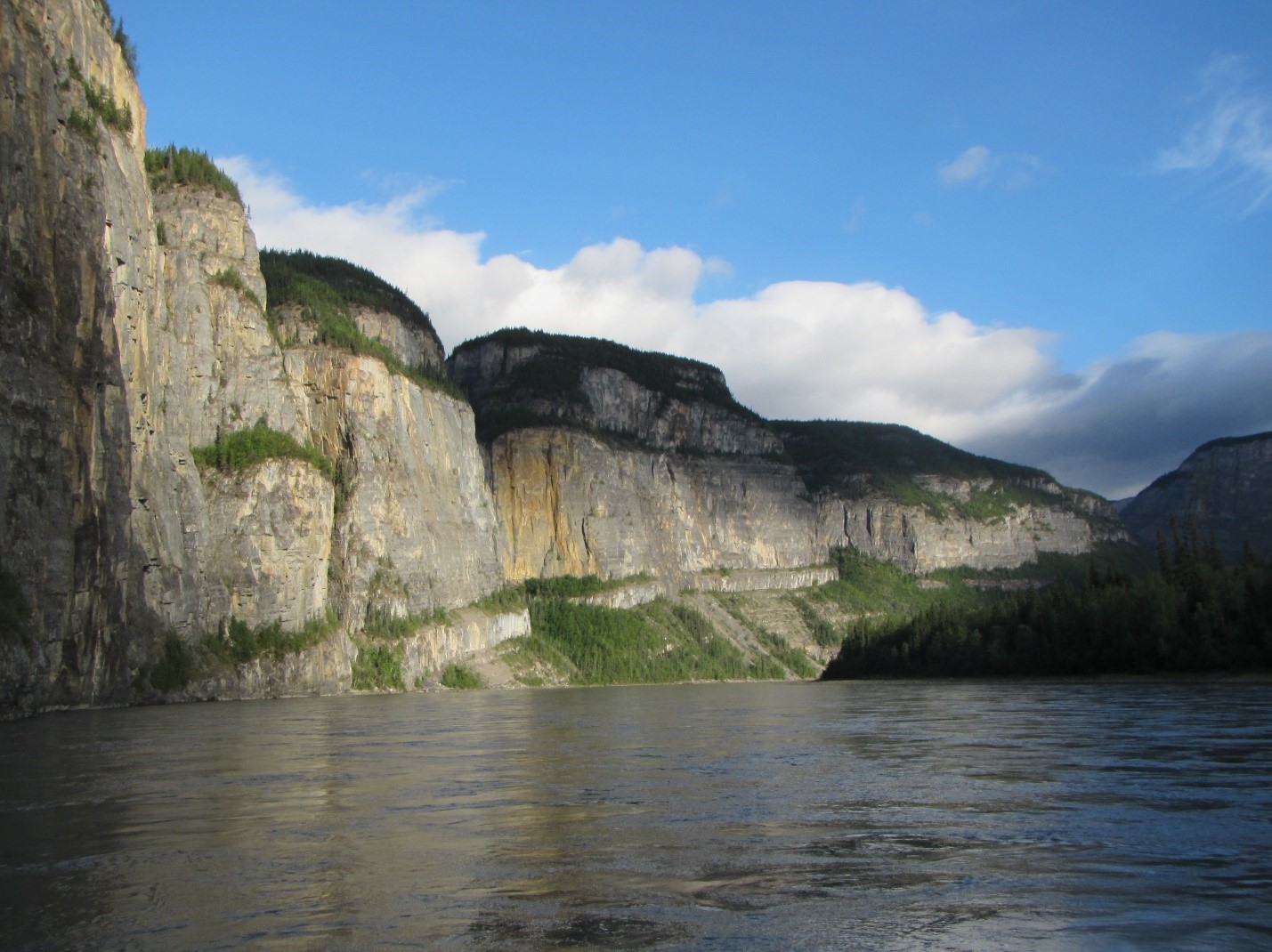
The trouble came on the last day at pickup in the town of Nahanni Butte. If you have never heard of Nahanni Butte, you probably aren’t alone as the population is about 90 people and isn’t accessible by road without first taking a ferry across the river. It is about 500 km by air to Yellowknife and over 700 km by road including two ferry trips across different rivers to access the main highway. It isn’t quite the middle of nowhere, but it is pretty close.
The aircraft that was normally used to pick up the rafting groups was out for repairs, so two smaller planes were sent to pick us up for our flight back to the rafting company’s home base in Fort Simpson. I ended up on a small Cessna with another couple from our group and my parents and children were on a second slightly larger Islander type aircraft. Shortly after takeoff the Cessna’s single engine stopped running and we lost all power at about 100 feet of altitude. There was a moment of eerie quiet followed by warning alarms in the cockpit. The aircraft stalled, but the pilot was able to bring it back over the runway and we came down hard but fortunately in a clearing. After skidding along the side of the runway for a stretch, the left wingtip clipped the trees and spun the plane around sideways. The angular impact split the tail off the aircraft and launched me, and the seat that I was sitting in, out the side of the plane. The image below tells the story better than I can describe.
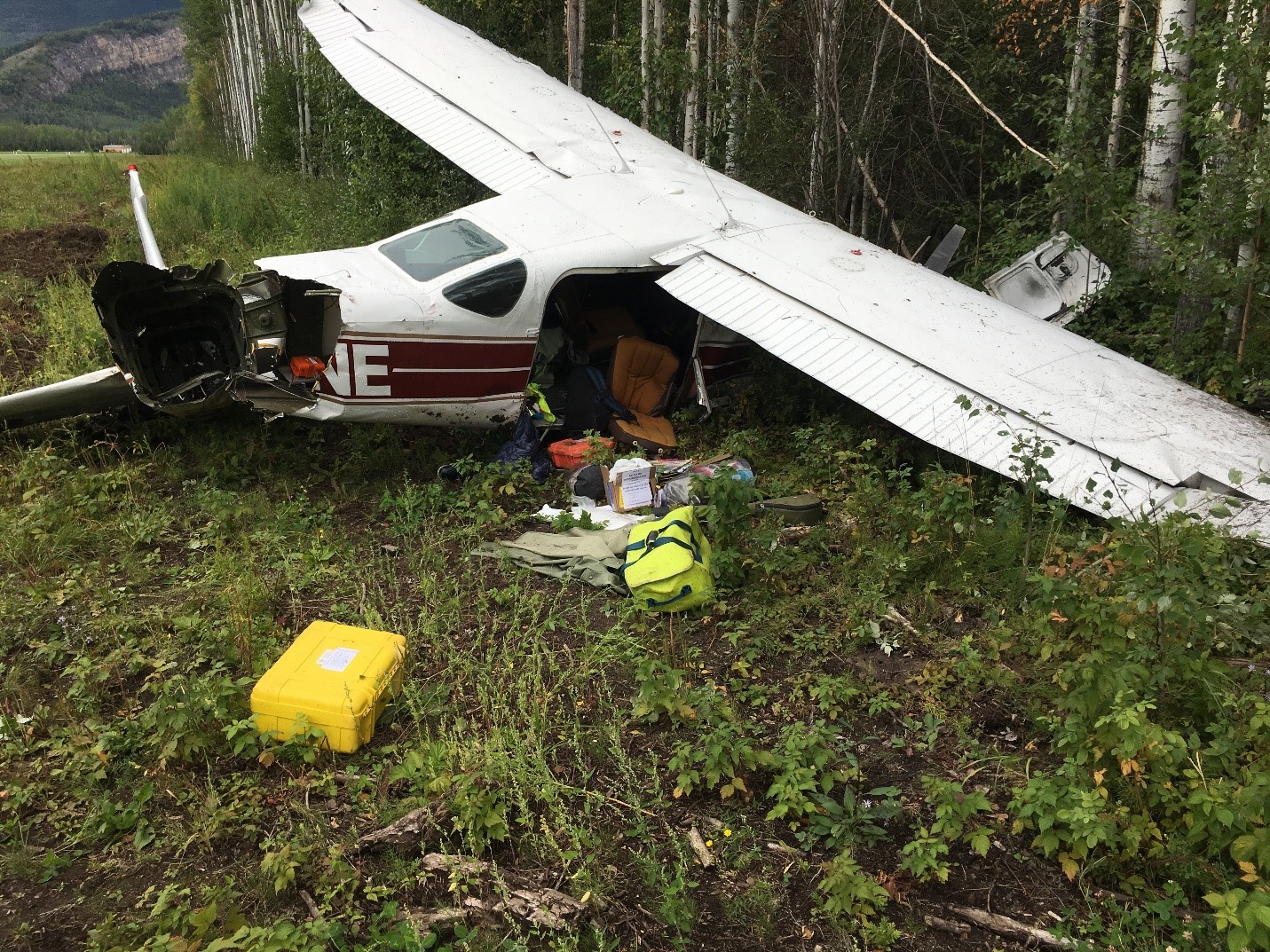
I didn’t have time to think about what was happening or ponder my life’s accomplishments as we were going down as the whole descent happened in less than ten seconds. Fortunately, we weren’t any higher and were still within the vicinity of the runway. From here my recollection of the events is a bit fuzzy and my first memory from being in the air to after the crash is of me walking down the runway to the pickup truck that was coming to get us. As the pilot and were sitting in the back of the truck on our way to the clinic in town, I somehow had the wherewithal to make a bad joke and asked the pilot if it was his first plane crash. don’t think that he found this particularly funny, but he did confirm that yes, it was his first crash. Over the pain of a cut on the side of my head, a few broken ribs and a separated shoulder, ’ll give myself a pass for the bad comedic timing.
The medical facilities in the town were somewhat limited, but they did their very best to take care of us. The people of Nahanni Butte were very helpful and hospitable. One family even brought freshly made bannock and homemade jam made from locally grown berries. The nurse in the clinic bandaged us up while communicating with emergency doctors on video conference. About five hours after the crash, an air ambulance flight finally reached us to transport everyone to the hospital in Yellowknife. Fortunately, everyone on the plane walked away from the event with relatively minor injuries.
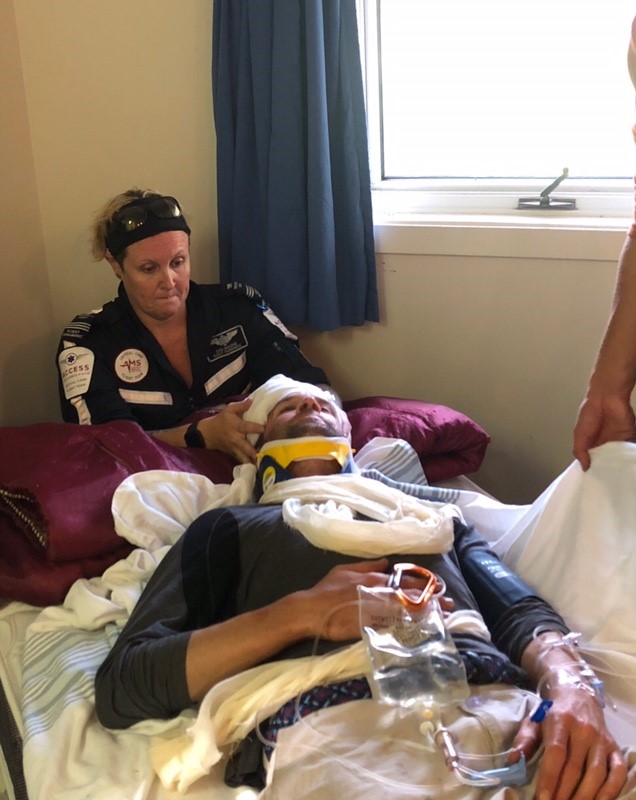
In Yellowknife, they stitched up the cut on my head and after assessing the x-rays it was determined that I didn’t have any acute life-threatening injuries. There wasn’t anything more that they could do for me so I was discharged and free to go. I no longer had any clothes as they had treated me as a trauma case when I arrived at the ER and had cut my clothes off with scissors, so I was all alone in my underwear! I could barely move my right arm and as I mentioned had a few broken ribs. By this point it was 2 am and my family had only made it as far as Fort Simpson which is still over an hour by plane or 600 km by road from Yellowknife. Fortunately, the nurses at the hospital took pity on me and let me sleep in the emergency ward until morning, when my family arrived in Yellowknife where we flew home to Calgary.
Back in Calgary, in the weeks and months following the crash, I had a further assessment by an orthopedic surgeon and went ahead with surgery to re-build my shoulder. The recovery is going well and hopefully I will be back to normal range of motion as well as my usual activity level in the new year once I have the metal plate removed from my shoulder.
Walking away from a plane crash does cause one to pause and reflect. I continue to think about it, but it doesn’t haunt me as a particularly terrifying event. I look at it as a life experience and when I do think deeply about it, I always feel that I am fortunate to still be here writing this. It is a minor miracle that my children and parents were not onboard and that the injuries that I did sustain will heal with time and physiotherapy. I can think of dozens of other outcomes and, given the circumstances, none of them are better.
To answer the questions that most people ask:
“Was it terrifying? Are you now afraid of flying?”
I didn’t really have time to be scared or think about what was happening. In the back of my head I was thinking that our young pilot would just bring the plane down gently or at worst for a bouncy landing on the runway. I haven’t developed a fear of commercial air travel, although on the Air Canada flight home from Yellowknife I did take a few Gravol to make sure that I slept the entire time. And I might hesitate to get on another single engine bush-plane for a while.
“Did your life flash before your eyes?”
I don’t have any memories of any particular thing ‘flashing before my eyes’ but perhaps I need to get out and accomplish more things to look back on. There is a blank in my memory of the moment of impact and waking up after, but that is about it. I think that I was briefly unconscious but fortunately I didn’t suffer any major head trauma.
“Did you buy a lottery ticket?”
I did buy one lottery ticket just for the fun of it, but I didn’t win anything. I feel lucky enough that I am still here and only have minor injuries, so I’ll take that over any monetary lottery winnings.
I have spent a lot of time thinking, journaling and reflecting on the event and my life. Looking back, I don’t know what I would have done differently. I was on a trip with my family, we were visiting a beautiful and remote part of our country, the weather was sunny and warm and it was a truly wonderful time. Walking away from a near-miss experience doesn’t change any of that.
Without sounding like a boardroom motivational poster or a cheesy life insurance advertisement, the experience has made me want to make more of every moment. To enjoy that extra time to laugh and have fun with my kids, go on that weekend getaway, host the dinner party with close friends or get out for that bike ride on a sunny afternoon. I have seen enough people face a tough life event like suddenly finding out that a family member has a health issue, or some sort of accident happens and they don’t ever get to that ‘retirement date’ that they had in mind.
The experience also made me really appreciate my work. This might not make sense as an epiphany after a plane crash, but I truly enjoy working with clients through their various stages of life. As much as you try to plan things, there is always something around the corner that is unexpected. Helping people work through unforeseen events is one of the most interesting parts of the job. This might not sound like prudent financial advice, but as much as you should prudently save for retirement, I believe that you must also enjoy your life along the way. I’m obviously not suggesting that anyone quit their job and spend their money recklessly, but if there is a dream that you have, you should make sure that you can make it happen sooner than later.
Managing money is as much about picking investments and studying the markets as it is helping clients reach their goals. Don’t get me wrong, we spend a lot of time working to find the best investments with the best risk/reward profile and take this part of the job very seriously. But how does someone find the balance between meeting future goals and making the most of today? There is never a right answer, but helping people figure out how to make the most of their savings and balancing their current and future plans is very fulfilling. As an advisor, telling clients to spend their money might not appear to be sound advice on the surface, but telling people not to spend their money isn’t realistic either. Money is a tool to help you have the life and freedom that you want. Having more money is always nice, but simply having confidence in your path and having enough to live the way you want, is really what it is about.
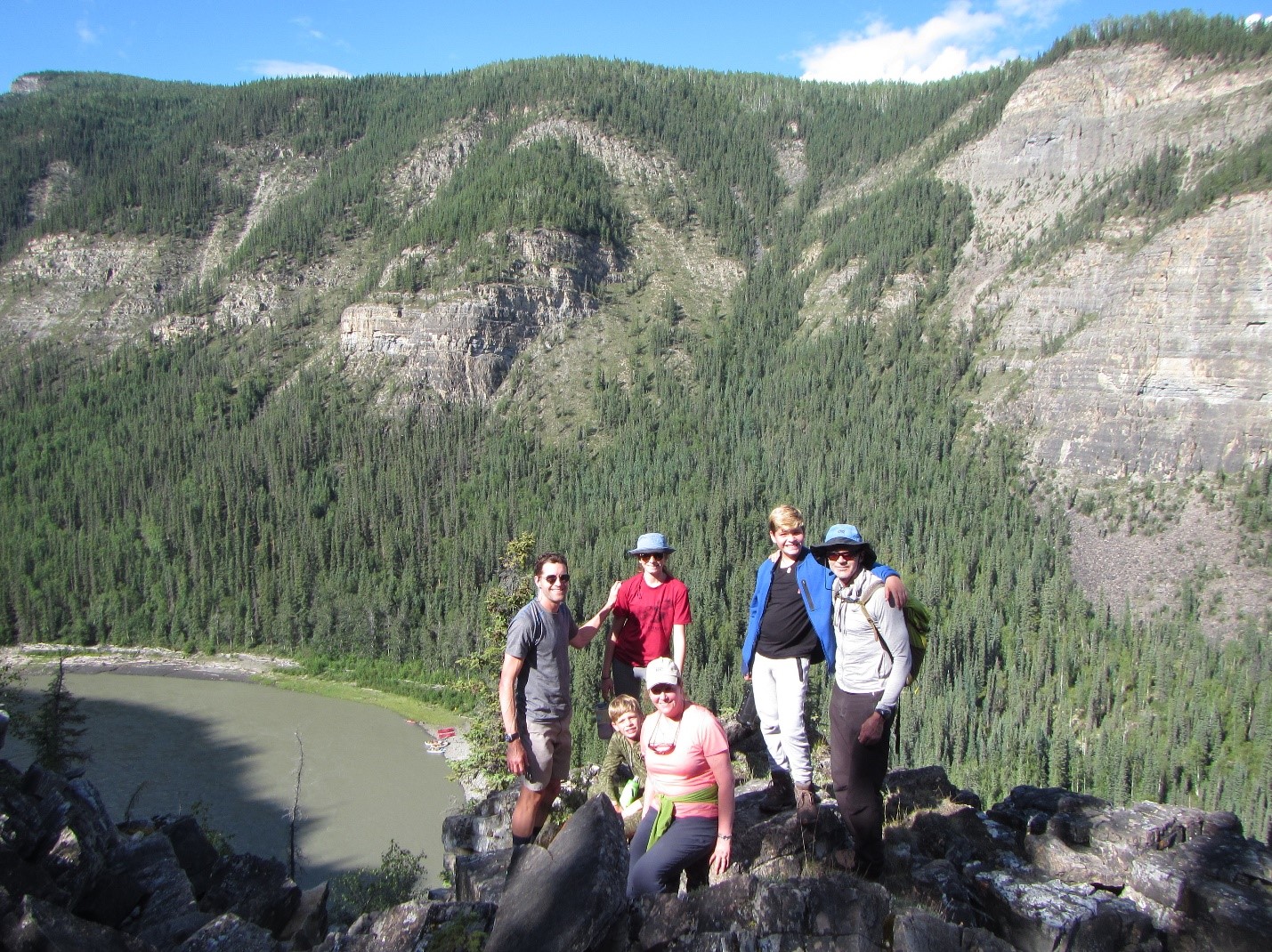
The opinions expressed in this report are the opinions of the author and readers should not assume they reflect the opinions or recommendations of Richardson GMP Limited or its affiliates.
Richardson GMP Limited, Member Canadian Investor Protection Fund.
Richardson is a trade-mark of James Richardson & Sons, Limited. GMP is a registered trade-mark of GMP Securities L.P. Both used under license by Richardson GMP Limited.